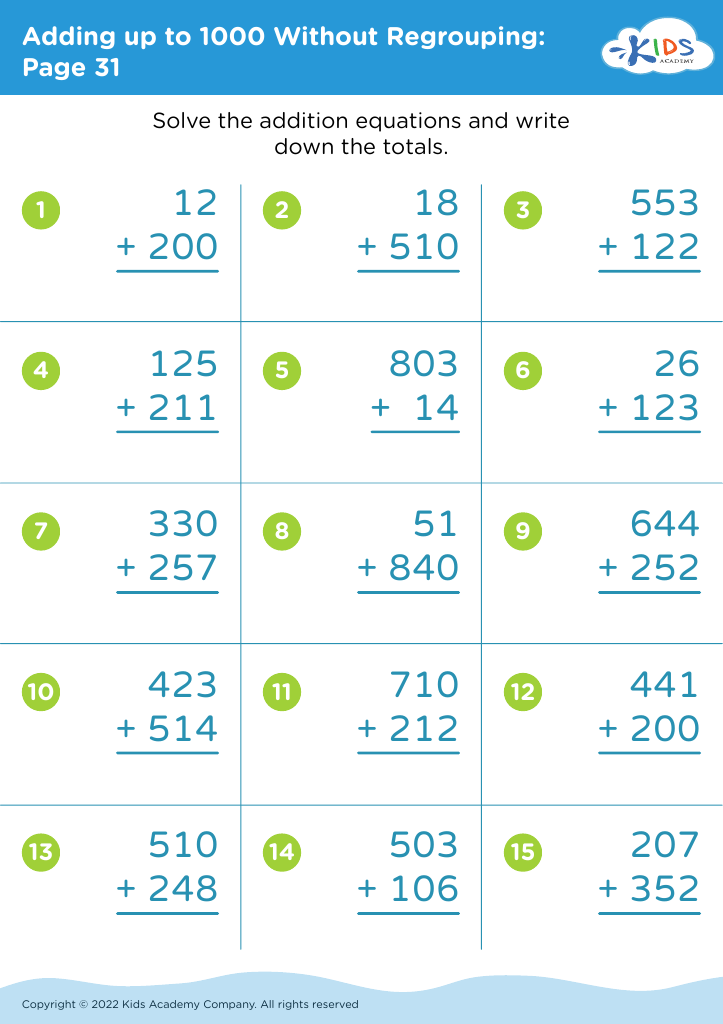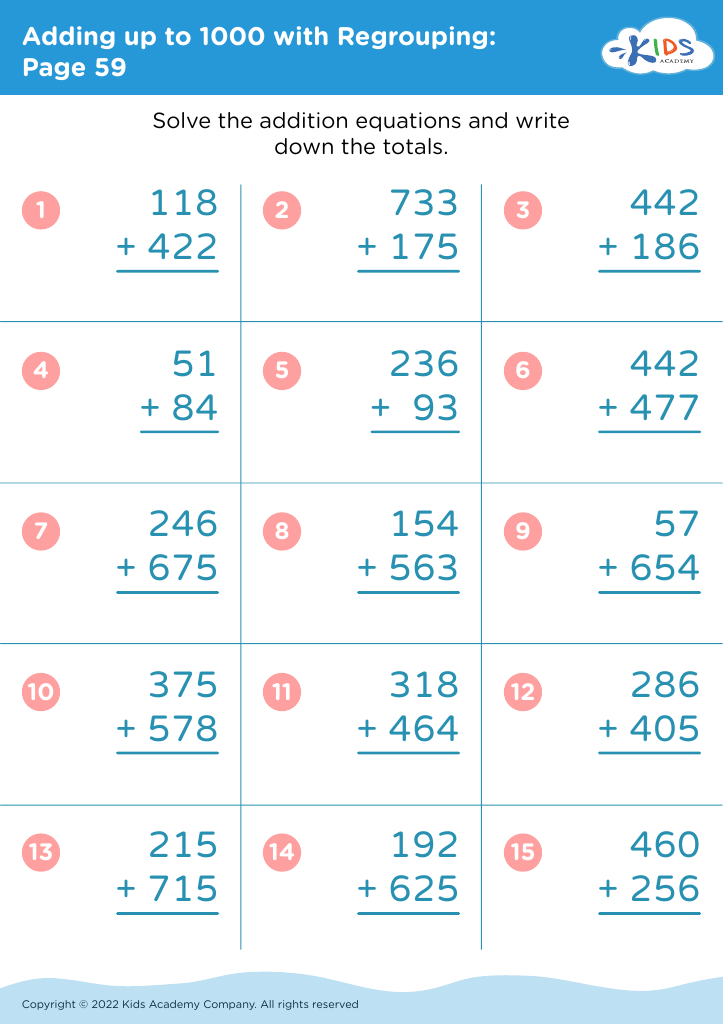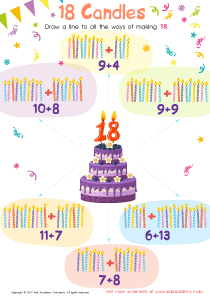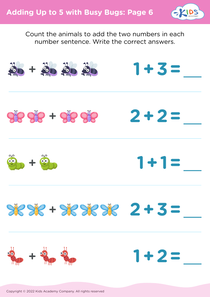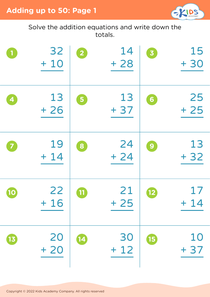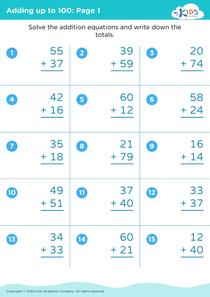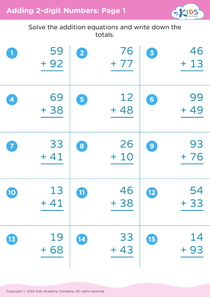Visual interpretation Adding up to 1000 Worksheets for Ages 4-8
3 filtered results
-
From - To
Discover an exciting collection of visual interpretation worksheets designed specifically for kids aged 4-8! Our “Adding Up to 1000” worksheets engage young learners and enhance their math skills through colorful visuals and interactive problems. These resources utilize imagery to make number concepts easily understandable and fun, encouraging kids to visualize addition in an engaging way. The worksheets are tailored to reinforce critical thinking and problem-solving skills as children master the art of addition. Perfect for home or classroom use, these worksheets will provide hours of educational enjoyment! Download today and watch your child's confidence in math grow!
Visual interpretation is essential for children aged 4-8 as it lays the foundation for critical thinking, communication, and learning in various subjects. At this developmental stage, children are naturally intuitive visual learners. By teaching them to interpret visual data—like charts, pictures, and graphs—parents and teachers can foster a deeper understanding of the world around them.
Visual literacy enables kids to translate images into meaning, enhancing their ability to process information and make connections. This skill is particularly important as they begin to encounter more complex texts and media. For instance, interpreting graphs in math helps children grasp concepts of addition, subtraction, and data comparison, engaging them in quantitative thinking. Similarly, understanding diagrams in science can clarify processes like the life cycle of a butterfly or the water cycle.
Moreover, visual interpretation cultivates creativity. Children learn to express ideas and emotions visually, which is crucial for self-expression and confidence. By encouraging this skill, parents and teachers not only support academic success but also prepare children for future challenges in an increasingly visual world. Thus, investing time in visual interpretation during these formative years is pivotal in shaping well-rounded, competent learners.


